
 Dayton Reimer
The Hockey Writers
Dayton Reimer
The Hockey Writers
45
Reads
0
Comments
Senators Can Learn From History at the Top of the Draft
As the old adage goes, the more selections you make at the draft, the better the results. It’s the reason we see struggling franchises sell their top players for as many picks and prospects as they can get their hands on. While everyone knows that in the end, the draft is more luck than skill, it doesn’t stop teams from playing the odds game, loading up on early picks to increase their chances of landing a franchise player.
Related: Ranking the Senators’ 1990s 1st-Round Picks
At the 2020 NHL Draft, the Ottawa Senators will make an incredible 14 selections, the most by any one team. Even more impressive is that half of those picks will come in the first two rounds, and of their three first-round selections, two are guaranteed to be within the top six. With a draft class that promises to be one of the best in years, featuring a top 10 that includes Alexis Lafreniere, Quinton Byfield, Tim Stutzle, Alexander Holtz, and Lucas Raymond, the Senators seem guaranteed to launch their rebuild into the next gear, no matter where they end up in the lottery.
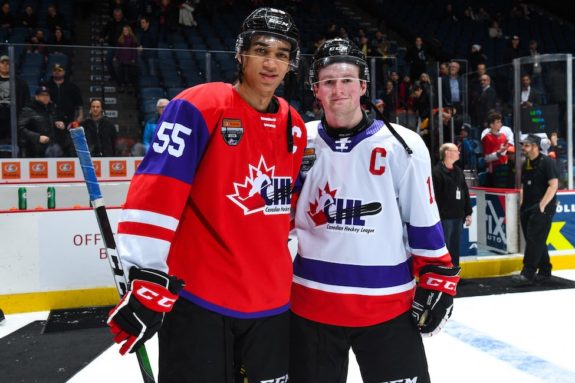
Yet, as mentioned previously, nothing is ever truly guaranteed when drafting teenagers. Year after year, NHL teams discover that their top prospects are not the players they thought they would be when they drafted them. The Senators are not the first team to make multiple top-six picks in the first round, and although finding a perfect comparison to their feat is difficult, there are teams that have had very similar experiences. The draft has changed several times since its inception in 1963, as have scouting methods, but the Senators could still learn something from its history.
Boston Bruins – 1969
The first team to make three first-round picks were the 1969 Boston Bruins. The 1969 NHL Amateur Draft is often considered the first modern draft; although the amateur player draft was first implemented in 1963, the NHL was still using their sponsorship program, in which players were recruited at very young ages by teams like college athletes. The combination of the two systems resulted in a draft that was completely picked over, and almost no players selected played in the NHL. When the league expanded in 1967-68, the best prospect had already been recruited by the Original Six, and the new teams were left with practically nothing to build with.
So, in 1968-69, the NHL decided to scrap the sponsorship, creating the first universal amateur draft at the end of the season. However, few teams seemed to care. That left a huge opening for a few creative thinkers to take advantage of the new system. The Bruins were one of the strongest teams in the late 1960s and early 1970s, possessing an incredibly deep farm system on top of a roster led by Bobby Orr, Phil Esposito, Johnny Bucyk and Ken Hodge. With few opportunities for young players to break into the strong team, the Bruins decided to sell off some mid-tier prospects and aging veterans to the expansions teams in exchange for draft picks.
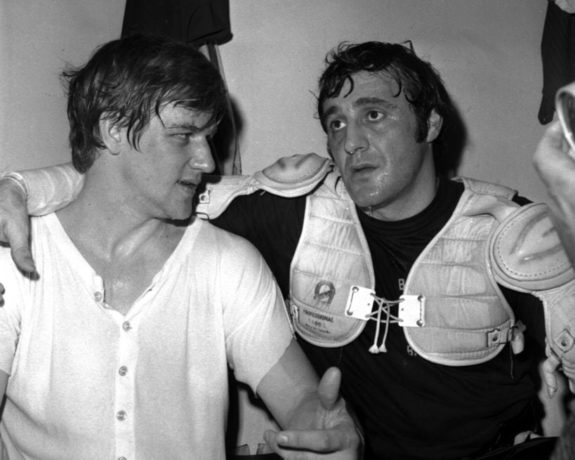
The deals seemed like a win for everyone involved: the Bruins cleared some space, and the weaker teams, like the Minnesota North Stars and Pittsburgh Penguins, were gifted some talent to help them win games at a very low cost. It didn’t matter that the North Stars and Penguins had finished last and second-last that season; they needed the players more than some unknown prospect they didn’t have yet. So, without breaking up their roster whatsoever, the Bruins ended up with the 1st, 2nd, and 12th picks at the draft.
However, one strange rule still existed, which allowed the Montreal Canadiens — seen as the NHL’s representative to French hockey — to exchange their 10th-overall draft pick in order to select the two best French players before the draft began. While they generally hadn’t used this in previous drafts, they used it in 1969 and picked Rejean Houle and Marc Tardif. That pushed the Bruins with the 3rd, 4th, and 11th selections, and they picked Don Tannahill, Frank Spring, and Ivan Boldirev.
It was a good group of prospects: Tannahill was a prolific goal scorer, Spring was a big, 6-foot-3 winger, and Boldirev was a talented power-forward-like player. Yet none of them could make any lasting impact with the Bruins and languished in the minors, waiting for their big chance. For Tannahil and Spring, that came at the NHL’s intraleague draft, which was an attempt to help balance out talent. The Bruins had no plans for their top picks, and they were claimed for nothing: Spring to the Philadelphia Flyers in 1971, and Tannahill to the Vancouver Canucks in 1972.
While Spring continued to struggle to make an NHL lineup, even on some abysmal expansion teams, Tannahill established himself a decent secondary scorer in both the NHL and World Hockey Association (WHA).
However, Boldirev became the best of the group. After playing 13 games for the Bruins over two seasons, he was traded in 1971-72 to the California Golden Seals, then to the Chicago Blackhawks in 1973-74. There, he found chemistry with Stan Mikita and the pair formed the team’s top line. In his five seasons in the Windy City, Boldirev never scored fewer than 62 points, even leading the team in points in 1977-78. His career spanned 1,052 NHL games over 15 seasons, during which he scored 866 points.
Boston Bruins – 1970
The Bruins were able to pull the same stunt in 1970, this time thanks to trades with the Flyers and Los Angeles Kings. In the 1968-69 season, while they were acquiring picks for the 1969 draft, they also made deals with the Flyers and Kings for their picks at next season’s draft. The trades made little impact, though, and the two teams finished at the bottom of the standings, giving the Bruins first and second overall for the second season in a row, despite having just won the 1970 Stanley Cup.
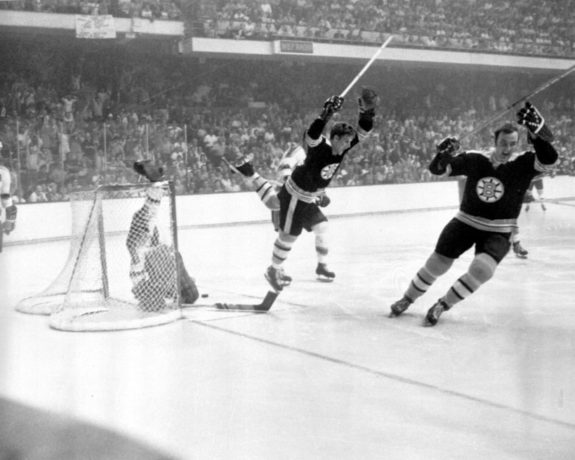
However, once again, they were bumped out of the top spot, this time due to the league expanding again. In one of the NHL’s weirder decisions, they had the two expansion teams — the Buffalo Sabres and Vancouver Canucks — spin a wheel to determine who would draft first. The Sabres won and picked Gilbert Perreault, while the Canucks went for defenseman Dave Tallon. Then it was the Bruins’ turn, and they drafted Reggie Leach and Rick MacLeish.
Related: A Look Back at the New York Islanders’ 2008 Draft
Both were far more talented than the previous year’s picks, but the Bruins still struggled to make room on the roster for them. MacLeish was traded first, sent to the Flyers in 1970-71. Leach played two partial seasons with the Bruins before he was traded to the Golden Seals in 1971-72, but was unable to find much success there, either. He was traded again in 1973-74 to the Flyers, where he joined his former teammate MacLeish. Along with Bobby Clarke, they became the core members of the Broad Street Bullies, and in 1974-75 became the first expansion team to win the Stanley Cup.
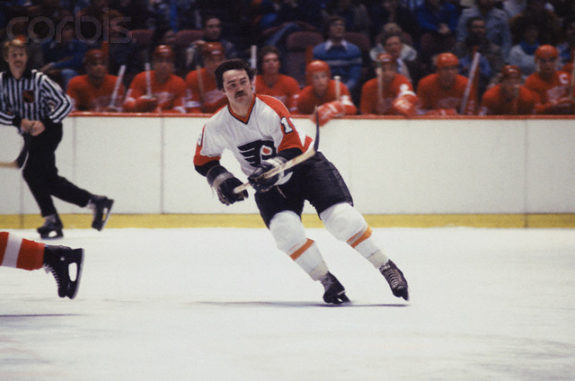
The Bruins made two more picks in 1970, selecting defenseman Ron Plumb ninth overall, a pick they had acquired from the St. Louis Blues that season, and defenseman Bob Stewart 13th overall. They, too, suffered the fate of the strong Bruins roster. Plumb signed with the WHA in 1972 after two seasons in the minors and became a top-scoring defender in the league. Stewart made his NHL debut in 1971-72, playing eight games with the Bruins, but was virtually nonexistent and was traded later that season — along with Leach — to the Golden Seals, where he was little more than an enforcer.
Montreal Canadiens – 1970-72
The Montreal Canadiens were another team that saw the value of the draft early on. As soon as the 1967 expansion teams were able to trade their picks, the Canadiens were making deals with them. The expansion draft had not been kind to the incoming teams, leaving them with afterthoughts and leftovers from the Original Six, who weren’t exactly thrilled to have the new teams there in the first place. So, when Montreal, who had an incredible stockpile of talented players, offered them one, they jumped on the opportunity and gave them whatever they asked for.
Between 1966 and 1968, Montreal made several deals with the North Stars, Kings, and the Golden Seals, sending veterans and prospects in exchange for first-round picks in 1970, 1971, 1972, and 1973. Yet the Canadiens knew that these players wouldn’t affect their new teams much, and they watched as the expansion consistently finished near the bottom of the league, giving them high pick after high pick. However, while the Bruins largely gave up on acquiring high draft picks after 1970, the Canadiens went all in, exploiting the inexperienced teams for all they were worth.
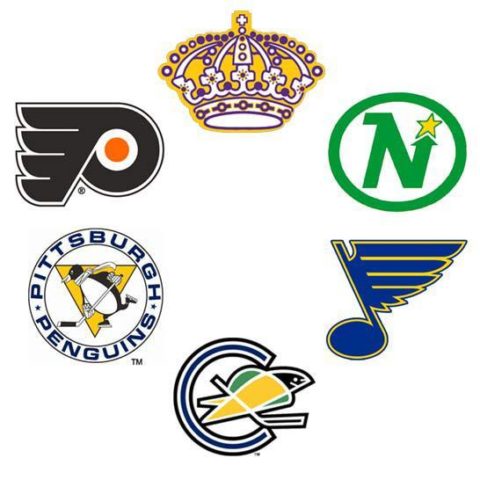
In 1970, the Canadiens, with the Golden Seals’ and North Stars’ picks, selected fifth and sixth overall, drafting goalie Ray Martyniuk and center Chuck Lefley. Martyniuk was the highest a goalie had ever been drafted, and he was labeled as ‘The Can’t-Miss Kid.’ He even had an agent — not a common practice then. Yet, in his first training camp, he fell flat on his face. Though it was due to his skates being duller than usual, it didn’t matter to the Canadiens’ brass and he was ostracized. It didn’t help that Ken Dryden emerged as the team’s starter in 1971-72, further pushing Martyniuk out of the spotlight. He never played an NHL game.
Lefley fared better, becoming a depth scoring forward for the Canadiens and later a top player for the St. Louis Blues. However, two picks after he was selected, the Toronto Maple Leafs chose Hall-of-Famer Darryl Sittler. It was a disappointing result after acquiring so many picks, but the Canadiens were far from done. They still had several picks spread over the next several drafts, and all they needed to do now was wait to reap the rewards.
Related: 1st Overall Draft Picks – What are the Odds of Success?
The rewards came sooner than expected. In 1970, a 19-year-old French star was stealing the show, and the Canadiens decided they needed to have him. The draft age was still 20 years old, so they had to wait until the following draft, but they already had the North Stars’ pick, acquired all the way back in 1967. But Minnesota was beginning to rise to the top of the expansion teams, so the Canadiens made another deal, flipping their 1970 first-round pick to the Golden Seals for their first-rounder next season. It was a gamble, banking on the team to sink once again to the bottom, but with a cost of next to nothing, the Canadiens were happy to take the risk.
Unexpectedly, the Golden Seals were awful in 1970-71, quickly sinking to the bottom, but so were the Kings. As the season was nearing a close, they were both in a dead heat for last place. The Canadiens had their heart set on first overall, so they swung a deal with Los Angeles, sending them veteran forward Ralph Backstrom for two depth players. In the final 33 games, Backstrom had 27 points and helped the Kings surpass the Golden Seals for second-last. It all came together at the draft when the Canadiens took Guy Lafleur first overall.
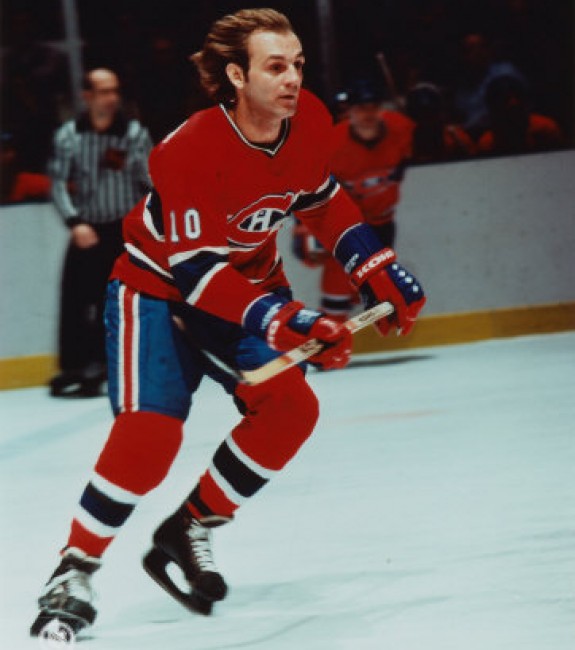
After landing Lafleur, they picked twice more in the first round, selecting Chuck Arnason seventh overall with a North Stars pick, and Murray Wilson at their original selection, 11th overall. Both were essentially busts; Wilson became a depth forward with Montreal and was with the team for three Stanley Cups, while Arnason hopped around the NHL, providing scoring for several bottom-feeding teams. But it didn’t matter. The Canadiens got Lafleur, one of the greatest players of all time. It’s worth noting that the Kings made out alright, too; with the second-overall pick, they drafted Marcel Dionne.
Somehow, the Canadiens still had first-round picks to use up, acquired from the Golden Seals and Kings back in 1968, and they finally arrived in 1972. They added another first-rounder from the North Stars – originally from the Penguins – in 1971, giving the Canadiens a league-record four first-round picks at the 1972 draft. While not the worst teams in the league, they still granted the Canadiens fourth, sixth, and eighth overall, which the Canadiens used to draft Steve Shutt, Michel “Bunny” Larocque, and Dave Gardner.
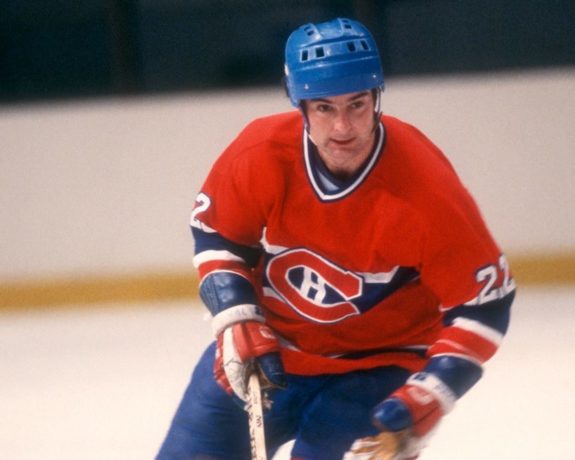
Shutt became a core member of the Canadiens’ dynasty and a clutch performer, scoring just shy of a point-per-game pace in the playoffs, while Larocque formed a deadly tandem with Dryden, winning the Vezina Trophy four times together. Gardner was a junior phenom, scoring 129 points in his draft year, but it never fully translated to the NHL. He ended his career with 350 games and 190 points.
The final selection, the Canadiens’ own 14th overall, was used on defenseman John Van Boxmeer. He struggled to find a place on the Canadiens’ defense behind Guy Lapointe, Serge Savard, and Larry Robinson, and was traded to the Colorado Rockies in 1976-77 for cash. Finally given meaningful ice time, he broke out, scoring 54 points in his first full season with them and later becoming a top player for the Buffalo Sabres.
Montreal Canadiens – 1974
By 1973, the Canadiens had used up all their picks acquired in the 1960s, and though they made only one selection that year — taking Bob Gainey eighth overall — they once again began to accumulate picks for the future. This time, they turned their attentions to the Kings, Canucks, and newly formed Atlanta Flames. In a flurry of deals at the end of the 1972-73 season, they acquired three more first-round picks in 1974. Not satisfied with four picks, they added the Blues’ first-rounder late in 1973-74, giving them a league record of five first-round picks.
Related: The Worst 1st Overall Draft Pick…Ever
Yet the results were subpar. Their first pick, fifth overall acquired from the Canucks, was used on Cam Connor, a high-scoring winger from Manitoba. He instead decided to join the WHA, where remained until 1978 before finally joining the Canadiens. However, he managed just 89 NHL games and nine goals over five seasons. Junior teammate Doug Hicks was taken right after Connor by the North Stars, who played 561 NHL games. The Canadiens picked Doug Risebrough next at seventh, who provided grit and depth scoring for four Cups, but right after him, the Penguins selected Pierre Larouche, who scored 822 points over 812 career games.
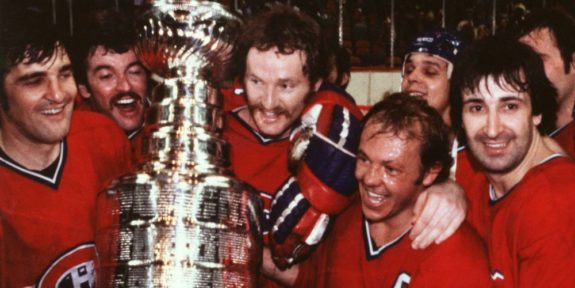
With the 10th pick, the Canadiens drafted Rick Chartraw, who became little more than a depth player in the NHL over 10 seasons. Hard-nosed defenseman Lee Fogolin was selected after him by the Sabres, who played nearly 1,000 NHL games. Back up at 12, the Canadiens picked Mario Tremblay, who played his entire career in Montreal and scored 584 points from the blueline. Finally, with their original pick, 15th overall, the Canadiens picked Gord McTavish, who was claimed during the WHA expansion draft in 1979 and played just 11 NHL games. Bryan Trottier was selected seven picks later.
The Canadiens continued to acquire picks up until the 1980s, when the rest of the league finally caught on to their scheme and refused to trade future picks with them. Management had changed by then, and the team began to slip from their dynasty. Still, from 1974 to 1981, they managed to select 18 times in the first round. The returns were nowhere near what they were able to acquire in the early 1970s, though — Pierre Mondou and Mark Napier were the only two who made impacts with Montreal. Still, they were able to construct a dynasty, winning six Cups in the 1970s, simply by exploiting the draft.
Quebec Nordiques – 1988
After the Canadiens’ incredible run of first-round picks in the early 1970s, other teams began to catch on that the draft was something that could quickly change their fortunes. Weaker teams became more hesitant to trade away their picks, even going as far as to intentionally lose in order to secure the first-overall selection. While still denied by the general manager, it’s widely accepted that the Penguins tanked in 1983-84 in order to take Mario Lemieux. But there were others, especially those who joined the league from the WHA, that just couldn’t find a foothold in the NHL.
The Quebec Nordiques were one of the WHA’s early success stories in the NHL. Despite finishing last in their first season, they were able to sign Anton and Peter Stastny away from Czechoslovakia, and together with Michel Goulet, they formed one of the league’s deadliest lines. In both the 1982 and 1985 playoffs, they advanced to the Conference Final. But things fell apart in 1987-88, and they missed the playoffs for the first time in seven seasons, finishing third-last in the league.
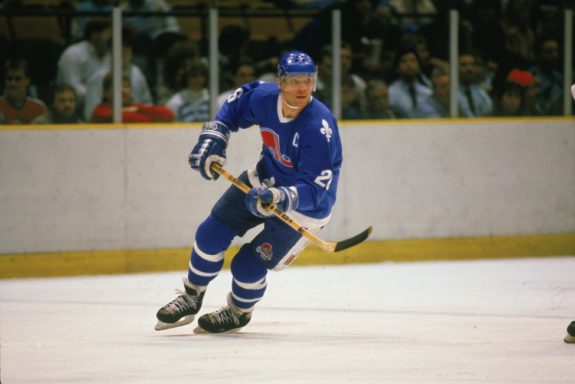
The one positive is that they had two high picks. Their own selection was third overall, but they also owned the Rangers’ pick thanks to a historical trade a season prior. Just before the 1987 draft, the Rangers general manager Phil Esposito offered their first-round pick in 1988 and $75,000 for their coach, Michel Bergeron. A trade like that had never occurred in the NHL before, but the return was too good for the struggling Nordiques. Bergeron was not as effective as he had been for the Rangers, though, and they missed the playoffs, giving the Nordiques the fifth overall selection as well.
The best part was that the 1988 draft class was one of the best in years, headlined by WHL forwards Mike Modano and Trevor Linden, and Finnish star Teemu Selanne. The Nordiques were the only team with multiple first-round selections that year, which boded very well. Yet rather than reach for the stars they so badly needed, they played it safe, selecting defensive defenseman Curtis Leschychyn and QMJHL forward Daniel Dore, who was seen as the toughest of the top-five prospects.
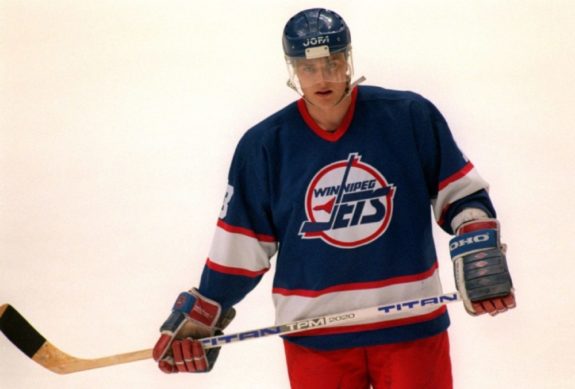
Leschyshyn made the team the following season and stayed with the Nordiques even after they moved to Colorado, winning a Stanley Cup with the Avalanche in 1995-96. He retired in 2003-04, racking up 1,033 games and 68 playoff appearances. Dore, however, played just 17 games with the Nordiques over two seasons. He was a dominant force in junior, but his 6-foot-3 frame didn’t seem all that big in the professional ranks, and he struggled to keep up. After the 1993-94 season, in which he played minor pro, Dore retired and went into scouting.
In any other year, ending up with a player like Leschyshyn would be a successful draft. But Martin Gelinas, Jeremy Roenick, Rod Brind’Amour, and Selanne were selected at the seventh, eighth, ninth, and tenth positions. Then there was Mark Recchi, who somehow slipped into the third round despite scoring 154 points with the Kamloops Blazers. The Nordiques picks look far worse when seeing the talent around them, and although they fared better in subsequent drafts, their sub-par performances and financial troubles forced them to relocate in 1995-96.
New York Islanders – 1997-2000
The New York Islanders of the late 1990s and early 2000s were an exercise in futility. Despite finishing near the bottom of the league and compiling several high picks, they were unable to transform it into anything and often let their prospects depart for nothing. It all started in 1996-97 after yet another playoff-less season. Led by a young core of Zigmund Palffy, Todd Bertuzzi, Bryan McCabe, Robert Reichel, and Tommy Salo, and one of the best defensive corps in the league headlined by Calder Trophy winner Bryan Berard, the team decided to retool, hoping to return to the post-season in the near future.
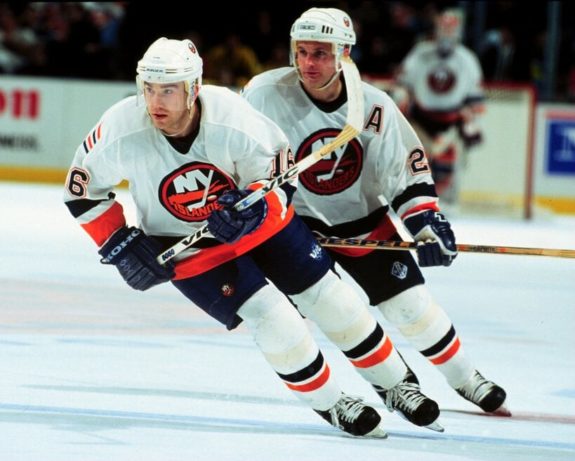
With the season nearing an end, and the Islanders well out of a playoff spot, they sold veteran Wendel Clark back to the Maple Leafs for prospect Kenny Jonsson and their first-round pick in 1997. The Leafs weren’t much better, though, and when the season came to a close, the Islanders owned the fourth and fifth overall selections. While not the strongest draft, it was considered well above average with some intriguing talent, but all eyes were on the Islanders, with many expecting them to trade one of their picks for immediate help.
However, no offer came that suited them, and they decided to keep the pick, selecting goalie Roberto Luongo and defenseman Eric Brewer. Brewer was a bit of a surprise, as the Islanders had a strong group of young defenders already, and instead needed help at center, making Daniel Tkachuk a more logical selection. But the initial returns seemed promising enough; Brewer made his debut the following season, scoring 11 points as a rookie, and Luongo joined him the season after that, playing 24 games and putting up a 0.904 save percentage. The team still had a lot of growing to do, but all the pieces seemed to be in the right place.
The team improved their record in 1997-98, but they stumbled again in 1998-99 and decided to make big changes. They already owned the fifth overall selection thanks to their poor finish, but they decided to purge all their veterans for picks and prospects. According to Brian Burke, many GM’s believed the 1999 draft class was weak and were willing to part with picks, and the Islanders took advantage of it. They grabbed the Canadiensè first-rounder for veteran Trevor Linden, then made a blockbuster with the Kings for theirs, trading Palffy, Bryan Smolinski, goalie prospect Marcel Cousineau for Olli Jokinen, Travis Green, Mathieu Biron, and their first-round pick.
The Islanders made one more deal on draft day with the Dallas Stars, sending a second and a third-round pick in exchange for their first. For the first time since 1974, an NHL team owned four picks: fifth, eighth, 10th, and 28th. With their first three picks, they took Tim Connolly, Taylor Pyatt, and Branislav Mezei, ranked fourth, eighth, and ninth, respectively, by NHL Central Scouting. With the last pick, they took a chance on a 6-foot-7 Slovakian defender, Kristian Kudroc, ranked 17th among Europeans.
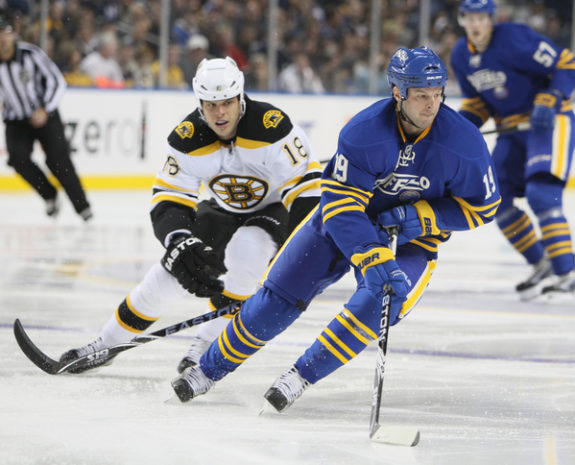
For a first-round that featured several high profile busts, the Islanders made out surprisingly well. Connolly became a top-six centerpiece despite a string of injuries, while Pyatt developed into an energy winger in a career that spanned 13 seasons. However, neither were given the chance on Long Island. The Islanders sunk even lower in 1999-00 with their worst finish since 1995-96. By a stroke of luck, they won the lottery, earning the first-overall pick and had the enviable choice between forwards Dany Heatley or Marian Gaborik, where they desperately needed help.
Yet the Islanders had other plans. First, goalie Kevin Weekes was packaged with Kudroc to the Lightning for their first-round pick, fifth overall. Then, Luongo, who had been under the impression he was going to be the Islanders’ starter, was shipped to the Florida Panthers, along with Jokinen, for Mark Parrish and Oleg Kvasha. With no starting goalies left, the Islanders stepped up and selected Rick DiPietro, who had opted into the draft at the last second, becoming the first goalie to go first overall. Then, with their second pick, they grabbed the goal-scoring pugilist Raffi Torres.
The pick caused a massive shift in goals for the team. No longer was rebuilding an option; they had their goalie of the future, and they could start building to win now. In a matter of two seasons, every player selected in the first round before DiPietro was gone. After Luongo, Brewer was also traded on draft day, sent to the Edmonton Oilers for veteran Roman Hamrlik. Connolly and Pyatt were traded exactly a year later, sent to the Buffalo Sabres for Michael Peca. Finally, Mezei was sent to the Panthers Jul 3, 2002, for tough guy Jason Wiemer. Not even Torres stuck around, traded in 2002-03 to the Oilers for Janne Niinimaa.
From 2001 to 2004, the Islanders made the playoffs three times, but failed to advance past the first round. Their best result, ironically, was in 2001-02, the only season DiPietro didn’t play an NHL game since getting drafted. After the 2004-05 lockout, DiPietro fully assumed the starting job and he performed well, getting the team back to the playoffs in 2006-07. The Islanders were ecstatic and signed him to a 15-year, $67 million deal. Over the next six seasons, they made the playoffs just once, with DiPietro getting bogged down with numerous injuries and eventually replaced by Evgeni Nabokov.
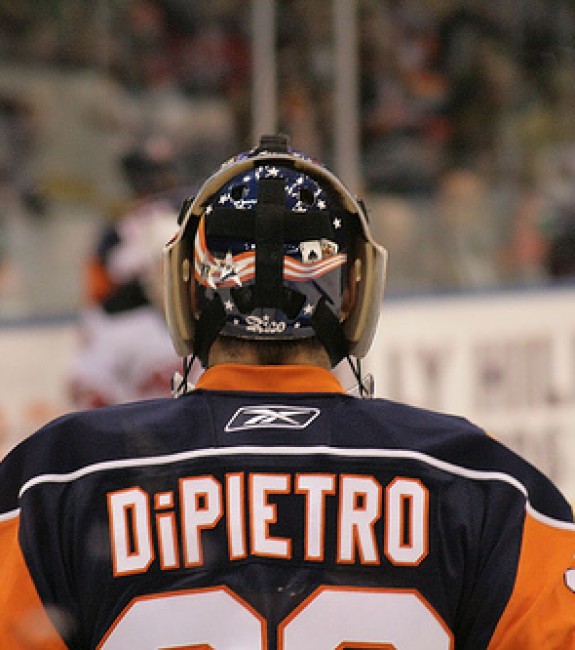
DiPietro was bought out July 2013, ending a dark period in Islanders’ history. It was the end of an era of mismanagement that forced the team into their second rebuild in a decade after sinking to last place in 2008-09. By then, they had figured out how to treat prospects, but the failures of the 2000 draft will hang over their heads until 2029 when the contract finally comes off the books. As for DiPietro, he struggled to find work in hockey after that, eventually retiring in 2014 and going into broadcasting.
Related: Rick DiPietro: Life After Hockey
It all could have been avoided if they had simply waited. Jokinen hit 91 points with the Panthers while Pyatt scored 23 goals in 2006-07, Connolly had 65 points in 2009-10, and Luongo retired with the third-highest wins total of all time. Even Brewer, noted for his defensive skills, hit 29 points twice in his career. The biggest failure for the Islanders – more than the awful trades and bad contracts – was the inability to follow through with their rebuild.
Vancouver Canucks – 1999
The Canucks were in a similar situation to the Islanders in 1998-99. They had struggled since their Final loss to the Rangers in 1993-94 and were now near the bottom of the league. Markus Naslund was the team’s best player, but he had little support. So, with the guidance of general manager Burke, the Canucks decided to overhaul their roster, and he had just the targets. the first was Patrik Stefan, a Czech forward compared to Jaromir Jagr, followed closely by Daniel and Henrik Sedin, twins playing out of the Swedish Elite League.
However, the only problem was that they were projected to go first, second, and third in the draft. The Canucks already owned the third overall pick but needed to swing deals with the Lightning and Atlanta Thrashers to get all three. Through several, convoluted moves, Burke was able to add the second overall pick. At one point or another leading up to the draft, the Canucks owned the first four selections, though not all at the same time.
Partway through his wheeling and dealing, Burke realized getting all three picks would be impossible, so he settled with for the Swedish twins, knowing the Thrashers wanted Stefan. The rest, as it goes, is history. Daniel and Henrik Sedin’s numbers now hang from the rafters and could be destined for the Hall of Fame. No others from 1999 had as much success as them, and it was the right move to make sure they’d stay together. As for Stefan, he suffered from concussion problems, derailing a promising career.
Lessons for the Senators
So, what can the Senators learn from teams who have had multiple high picks? The first is simple – take the best players available. Reaching for a player with a high pick based on need can result in failure. Look at the Nordiques; they went for the ‘safe’ picks that were supposed to help them now, despite more talented players still remaining to be picked. Next, go with your gut. 2020 has lots of highly talented players, making the choice difficult as to who they should pick. But, like the Canucks, identify the targets, and don’t stray from that goal.
Finally, be patient. The Islanders are the classic example of a team that failed to wait for their prospects to develop, but the Bruins also gave up too early on talented players, burying them in the minors until someone else took them off their hands. The odds are, no matter how deep the draft class, that not all three players will make an impact in the NHL. But, by learning from these examples from history, the Senators can be prepared to make the best out of a very good situation.
The post Senators Can Learn From History at the Top of the Draft appeared first on The Hockey Writers.
Popular Articles

















































 Blackhawks Chicago
Blackhawks Chicago Panthers Florida
Panthers Florida Penguins Pittsburgh
Penguins Pittsburgh Rangers New York
Rangers New York Avalanche Colorado
Avalanche Colorado Kings Los Angeles
Kings Los Angeles Maple Leafs Toronto
Maple Leafs Toronto Bruins Boston
Bruins Boston Capitals Washington
Capitals Washington Flames Calgary
Flames Calgary Oilers Edmonton
Oilers Edmonton Golden Knights Vegas
Golden Knights Vegas Flyers Philadelphia
Flyers Philadelphia Senators Ottawa
Senators Ottawa Lightning Tampa Bay
Lightning Tampa Bay Red Wings Detroit
Red Wings Detroit Islanders New York
Islanders New York Sabres Buffalo
Sabres Buffalo Devils New Jersey
Devils New Jersey Hurricanes Carolina
Hurricanes Carolina Blue Jackets Columbus
Blue Jackets Columbus Predators Nashville
Predators Nashville Stars Dallas
Stars Dallas Jets Winnipeg
Jets Winnipeg Wild Minnesota
Wild Minnesota Blues St. Louis
Blues St. Louis Mammoth Utah
Mammoth Utah Ducks Anaheim
Ducks Anaheim Canucks Vancouver
Canucks Vancouver Sharks San Jose
Sharks San Jose






